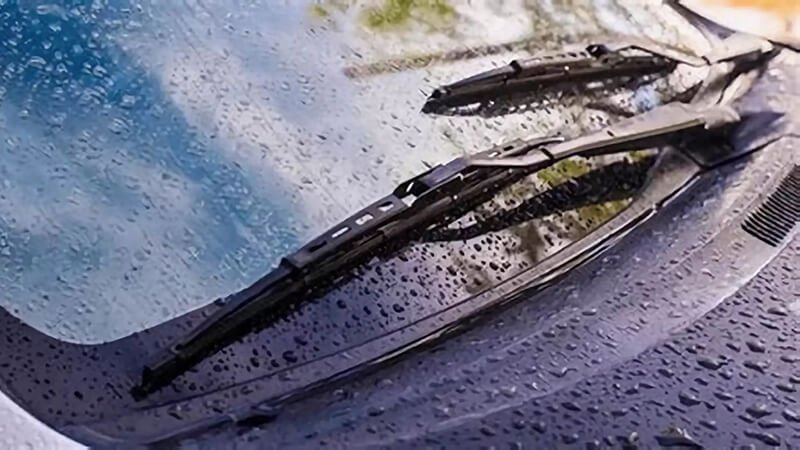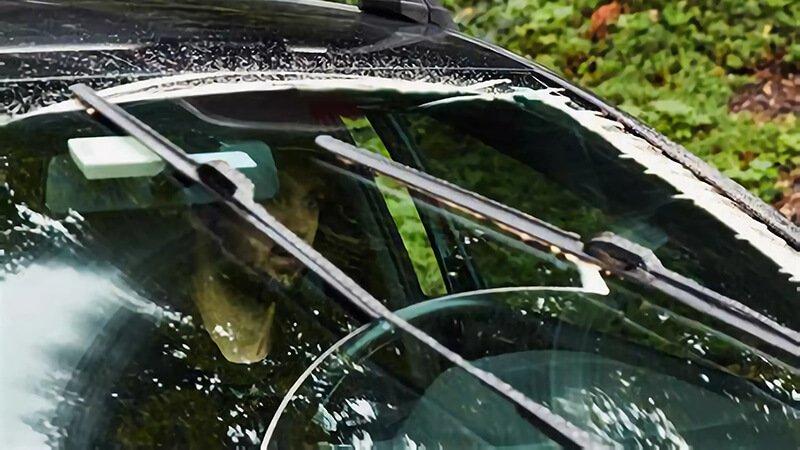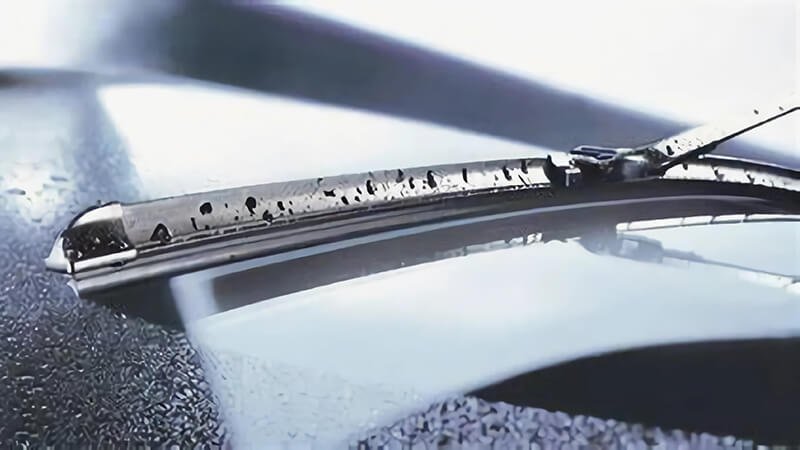Choosing the right windshield wipers is essential for driving safety. If you're unsure what size you need, don't worry! Let’s break it down and help you select the best wiper blades for your vehicle.
To determine the right size of windshield wipers for your car, you need to consider the make and model of your vehicle. Factors like the climate and your personal preferences also play a role in choosing between conventional, beam, and hybrid wipers.
Understanding the size and type of wipers suitable for your car can seem tricky. However, once you know what to look for, it’s easy to make the right choice that will enhance your driving experience.

How do I know my windshield wiper size?
Figuring out the correct windshield wiper size doesn’t have to be complicated. There are a few easy ways to find out which size fits your car perfectly.
To find the right wiper size, you can refer to your vehicle's owner manual or use online tools that allow you to search by your car's make and model. You can also check the size on the existing wipers or visit an auto parts store for advice.
Knowing the correct size of wiper blades1 is the first step in ensuring your windshield wipers function optimally. There are several ways to determine the right size for your vehicle, and these methods can be both quick and reliable.
-
Vehicle Owner’s Manual: The simplest way to find the correct wiper size is by consulting your car’s owner manual. Manufacturers usually provide the recommended wiper sizes for both the driver’s and passenger’s sides. If the manual is not available, you can often find it online on the manufacturer’s website.
-
Online Tools2: Many auto parts websites offer tools where you can enter your vehicle’s make, model, and year to find the recommended wiper sizes. This is a quick and easy way to ensure you get the right fit.
-
Old Wipers: If you’re replacing worn-out wipers, you can measure the length of the existing blades. Be mindful that the driver’s side blade is often larger than the passenger side blade, and this difference needs to be reflected when purchasing replacements.
-
Auto Parts Store3: Many brick-and-mortar auto parts stores have online tools or in-person experts who can help you determine the right wiper size for your car. Some even allow you to try the blades before purchasing to ensure a proper fit.
Comparison of Wiper Size Determination Methods
| Method | Advantages | Limitations |
|---|---|---|
| Vehicle Owner’s Manual | Reliable and accurate | Might not always be available |
| Online Tools | Quick and convenient, accurate | Requires internet access |
| Measuring Old Wipers | Simple and direct | Only works if current wipers are the right size |
| Auto Parts Store | Expert advice and product variety | Might involve additional travel |

How do I find out what wiper blade I need?
Once you know the correct size, the next step is choosing the right type of wiper blade. With so many options available, understanding the differences between them is crucial for making an informed decision.
The main types of wiper blades are conventional, beam, and hybrid. Each has its own advantages, depending on your budget, climate, and how long you want the blades to last.
Selecting the right type of windshield wiper blade depends on several factors, including the climate, the age of your car, and your budget. Let’s break down the three most common types of wiper blades and their unique advantages:
-
- Design: Conventional blades are the traditional type of wiper blade, often made with a metal frame that holds a rubber strip. This design uses pressure points along the rubber blade to wipe the windshield clean.
- Best for: Mild weather conditions and drivers on a budget.
- Durability: Conventional wipers are generally less durable than beam or hybrid blades, and they might wear out quicker in harsh weather conditions like snow or heavy rain.
- Pros: Cost-effective, widely available, easy to install.
- Cons: May wear down faster, less effective in extreme weather conditions.
-
- Design: Beam blades feature a single, curved, and flexible structure that distributes pressure evenly across the entire wiper blade. This reduces streaking and improves performance.
- Best for: Extreme weather conditions, such as heavy rain, snow, or ice.
- Durability: Beam blades are generally more durable and can last longer than conventional blades, making them a good choice for areas with harsh climates.
- Pros: Durable, more consistent wiping, less prone to freezing or ice buildup.
- Cons: More expensive than conventional blades.
-
- Design: Hybrid blades combine the traditional frame design of conventional wipers with the flexible structure of beam blades. The result is a wiper that offers both durability and effective coverage.
- Best for: Drivers who need a balance of performance and cost.
- Durability: These blades tend to be more durable than conventional blades but less expensive than full beam blades.
- Pros: Balanced performance for all conditions, quieter than conventional blades, affordable.
- Cons: Can be less durable than beam blades in extreme weather.
Blade Type Comparison
| Type | Material | Performance | Ideal For |
|---|---|---|---|
| Conventional | Rubber, metal frame | Standard performance | Mild climates, budget-conscious drivers |
| Beam | One-piece flexible design | Superior performance in harsh conditions | Heavy rain, snow, ice |
| Hybrid | Metal frame, flexible design | Balanced, good in various conditions | Drivers seeking versatility at an affordable price |

Do you buy 2 different size wiper blades?
It’s common for cars to use different-sized wiper blades on the driver’s side and passenger’s side. But does that mean you need to buy two different sizes?
Yes, many vehicles require two different-sized wiper blades. Typically, the driver's side blade is longer than the passenger side blade to ensure optimal coverage across the windshield.
In most vehicles, the driver’s side wiper blade is larger than the passenger side blade. This design ensures optimal coverage7 for the driver, who needs a wider range of visibility. The passenger side blade is typically shorter because the area of the windshield on that side is smaller, and it doesn’t require as large of a wiper to clean effectively.
-
Why Different Sizes?:
- The difference in wiper blade sizes8 is not a random choice but a functional one. The driver’s side typically requires more surface area to wipe, especially in vehicles with larger windshields. For example, a larger driver-side blade ensures that the wiper can effectively cover the most important areas of the windshield.
- On the other hand, the passenger side blade does not need to wipe as large an area, making a smaller blade sufficient.
-
Impact on Performance:
- Using two blades of the same size can lead to suboptimal performance. The larger driver-side blade might not clear all areas effectively, especially when dealing with debris or rain buildup. Similarly, a smaller blade on the passenger side might result in streaks or poor visibility.
- It’s essential to ensure that you use the correct sizes to maintain proper windshield coverage9.
Importance of Different Wiper Blade Sizes
| Side | Wiper Blade Size | Reason |
|---|---|---|
| Driver’s Side | Longer (usually 26-28 inches) | To cover a wider area for optimal visibility |
| Passenger’s Side | Shorter (usually 14-18 inches) | To match the size of the passenger side windshield |

How do I choose a window wiper?
Choosing a windshield wiper goes beyond just the size. You also need to consider the blade type, material, and performance based on your vehicle’s needs and your driving conditions.
Selecting the right windshield wiper involves considering factors like the type of blade, weather conditions, and the durability of the material. Choosing a high-quality wiper can enhance your visibility and driving safety.
When it comes to selecting the best windshield wiper, several important factors should guide your choice. Here are the key considerations:
-
Material of the Blade:
- Rubber: Rubber is the most common material used for wiper blades. It’s affordable, performs well in mild conditions, and is easy to replace. However, rubber blades wear out faster in extreme conditions like intense heat, heavy rain, or ice.
- Silicone: Silicone10 blades last longer than rubber and perform better in harsh weather conditions. They are resistant to wear and tear, and their flexible nature helps prevent streaks, especially in heavy rain or snow.
-
- If you live in an area with frequent snow or ice, you’ll want to choose beam or hybrid blades, which are less likely to freeze up. These blades also provide a more consistent wipe, even in freezing temperatures.
- For regions with moderate rainfall and milder winters, conventional blades may work just fine. They are more budget-friendly and still provide adequate performance.
-
- High-quality wiper blades tend to be more expensive but last longer. Consider your budget and how frequently you drive. If you live in an area with frequent storms, it’s worth investing in more durable blades.
Factors to Consider When Choosing Wiper Blades
| Factor | Conventional Blades | Beam Blades | Hybrid Blades |
|---|---|---|---|
| Material | Rubber | Silicone | Silicone, Metal |
| Durability | Shorter lifespan | Longer lifespan | Moderate lifespan |
| Best for | Mild weather | Heavy rain, snow, ice | Versatile, balanced |

Conclusion
In conclusion, selecting the right windshield wipers depends on the size, type, and material suited for your driving conditions. Whether you opt for conventional, beam, or hybrid blades, ensure that you choose the right size for both sides of your windshield for optimal performance. Proper maintenance and timely replacement of your wiper blades can significantly improve visibility and safety.
If you are looking for OEM wipers13, come to reach out to us.
-
Explore this link to find top-rated wiper blades tailored for your vehicle, ensuring optimal performance and safety. ↩
-
Discover various online tools that simplify finding the correct wiper size for your vehicle, making the process quick and easy. ↩
-
Learn how to utilize auto parts stores for expert advice and a variety of wiper options, ensuring you get the perfect fit. ↩
-
Explore the benefits of Conventional Blades to see if they fit your needs and budget for wiper replacements. ↩
-
Discover why Beam Blades are ideal for harsh climates and how they outperform other types in severe weather. ↩
-
Learn about Hybrid Blades and how they offer a balance of performance and cost for diverse driving conditions. ↩
-
Learn how optimal coverage improves visibility and safety while driving, ensuring you make informed choices for your vehicle. ↩
-
Understanding wiper blade sizes can enhance your knowledge of vehicle maintenance and safety. Explore this link for detailed insights. ↩
-
Discover the significance of proper windshield coverage for safe driving and how it impacts visibility during adverse weather conditions. ↩
-
Explore the advantages of silicone wiper blades, including their durability and performance in harsh weather conditions. ↩
-
Find out which wiper blades are ideal for your local weather, ensuring optimal visibility and safety while driving. ↩
-
Learn how to select wiper blades that last longer and perform better, especially in extreme weather conditions. ↩
-
Know all details about OEM wipers from Runex which is a professional suppler for your business. ↩













